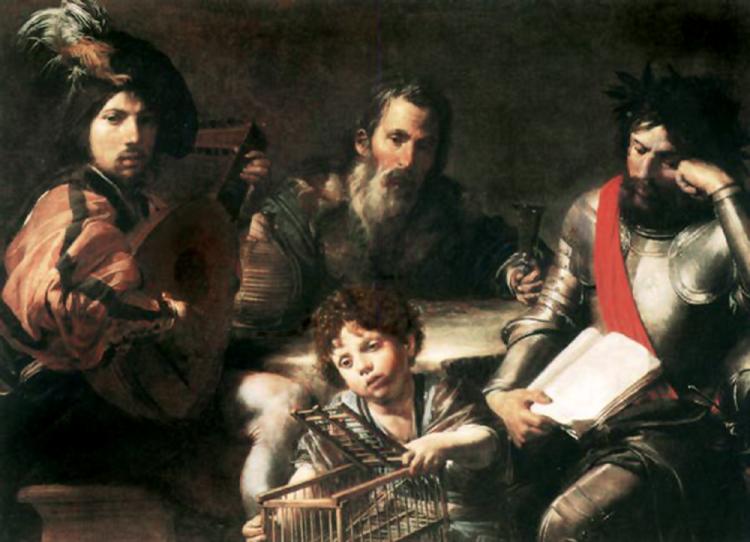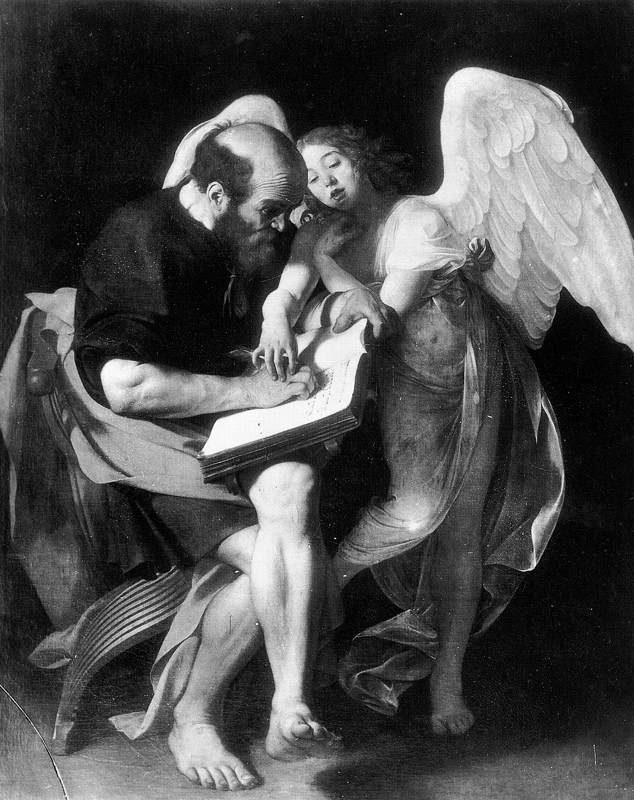Slide 1: Caravaggio (Michelangelo Merisi) The Inspiration of St Matthew 1602, destroyed
Slide 2: Caravaggio The Inspiration of St Matthew 1602, Rome, Contarelli Chapel
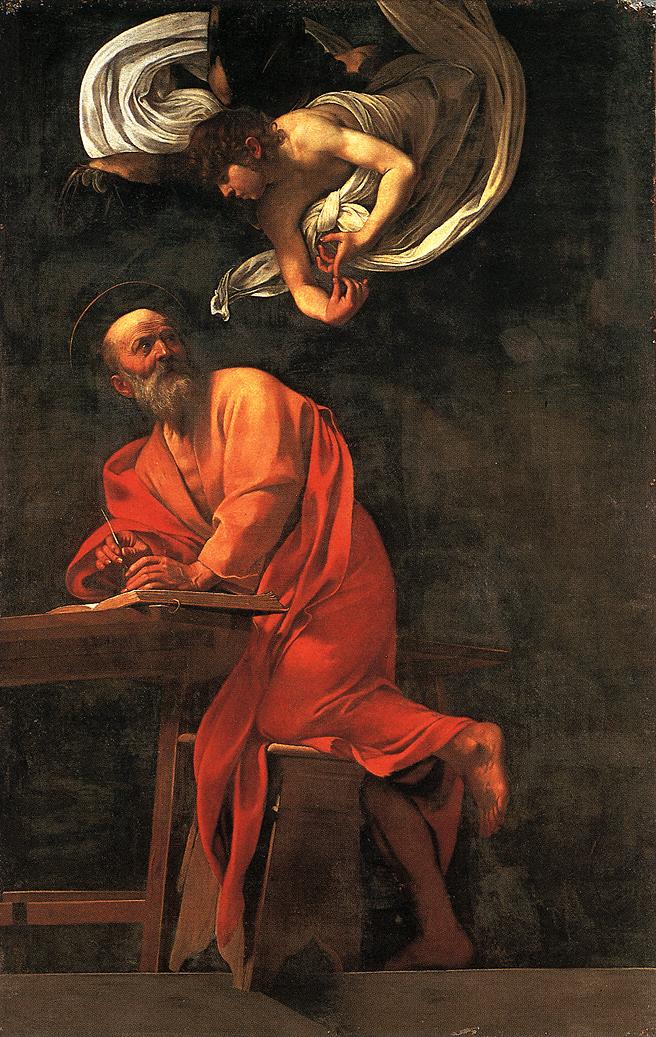
In 1565 the French Monsignor Matteo Contarelli acquired a chapel in San Luigi dei Francesi in Rome, but when he died twenty years later it had not yet been decorated. The executor of his will, Virgilio Crescenzi, and later his son, Giacomo, undertook the task. The decorative scheme called for a statue of St Matthew and the Angel, commissioned first to Gerolamo Muziano, and then to the Flemish sculptor Cobaert, for the high altar; and for a fresco cycle for the walls and ceiling by Cavalier d’Arpino. The latter decorated the wall in 1591-93, but the walls were left bare (this may reflect at least in part the Crescenzis’ intentions to speculate on the interest on the Contarelli estate). On 13 June 1599 a contract was stipulated before a notary by which Caravaggio undertook to execute two paintings for the lateral walls, for which he was paid the following year (1600), after the paintings had been set in place. Later, on 7 February 1602, after Cobaert’s statue had been judged unsatisfactory, an altarpiece was entrusted to Caravaggio in a separate contract that called for delivery of the work by 32 May, the Feast of the Pentecost. This painting was rejected, the artist made another one (which was accepted) in a surprisingly brief time, receiving payment for this second work on 22 September. The first version of the St Matthew and the Angel was purchased by Marchese Vincenzo Giustiniani and then ended up in Berlin, where it was destroyed in the Second World War. The second version (this picture) still stands over the altar today. The first version was a masterpiece of the artist. It contained, in the angel who with gentle indulgence guided the saint’s uncertain hand as he wrote, one of the most charming figures ever painted by the artist. The first painting was criticised for Matthew’s lack of decorum. In the final version, likewise a splendid feat of imagination but certainly less fascinating than the first, the angel much more correctly counts on his fingers, in the traditional scholastic fashion, the arguments than the saint should take note of and develop. A whirlwind of drapery envelops the angel. The saint balances on his bench, in precarious equilibrium, like a modern schoolboy; but this time the unorthodox elements do not seem to have raised particular objections.
Slide 3: Caravaggio The Calling of St Matthew 1599-1600, Rome, Contarelli Chapel
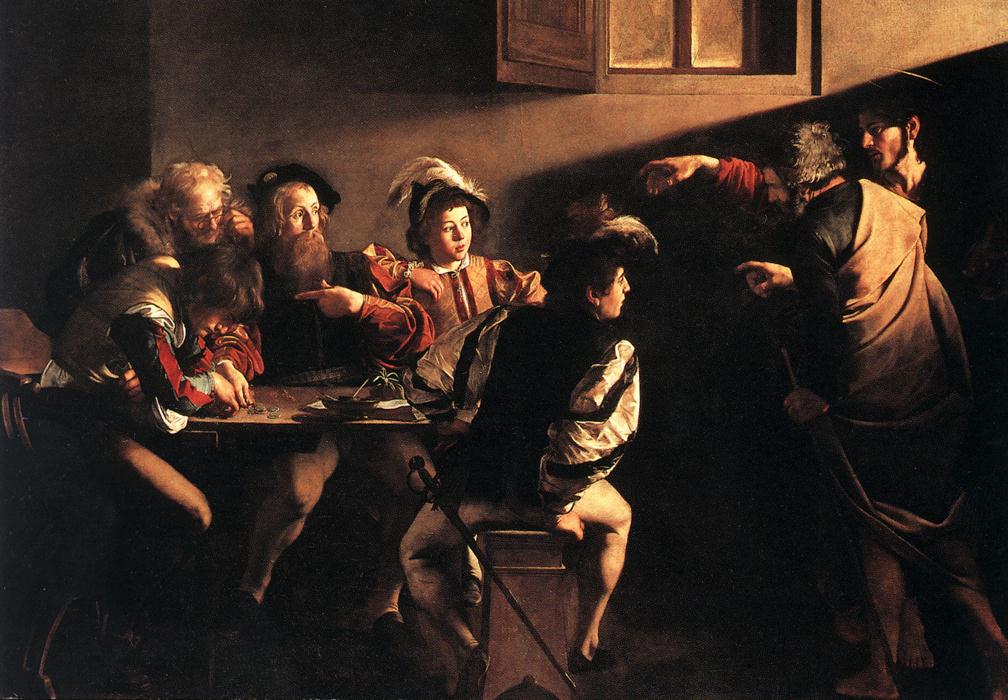
Slide 4: Caravaggio The Conversion of St Paul 1600-1601, Rome, Cerasi Chapel
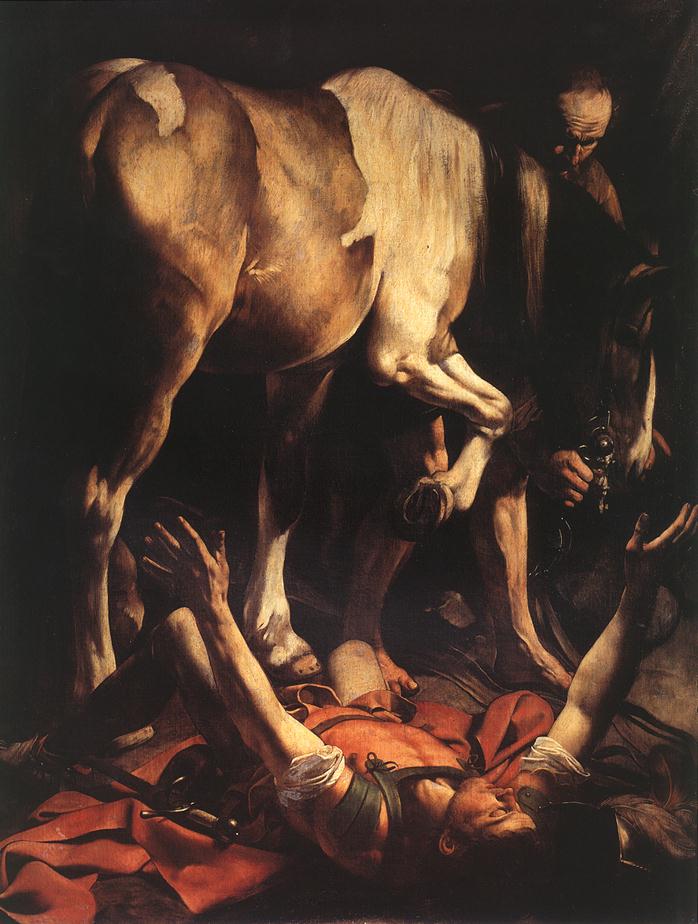
Slide 5: Caravaggio The Crucifixion of St Peter 1600-1601, Rome, Cerasi Chapel
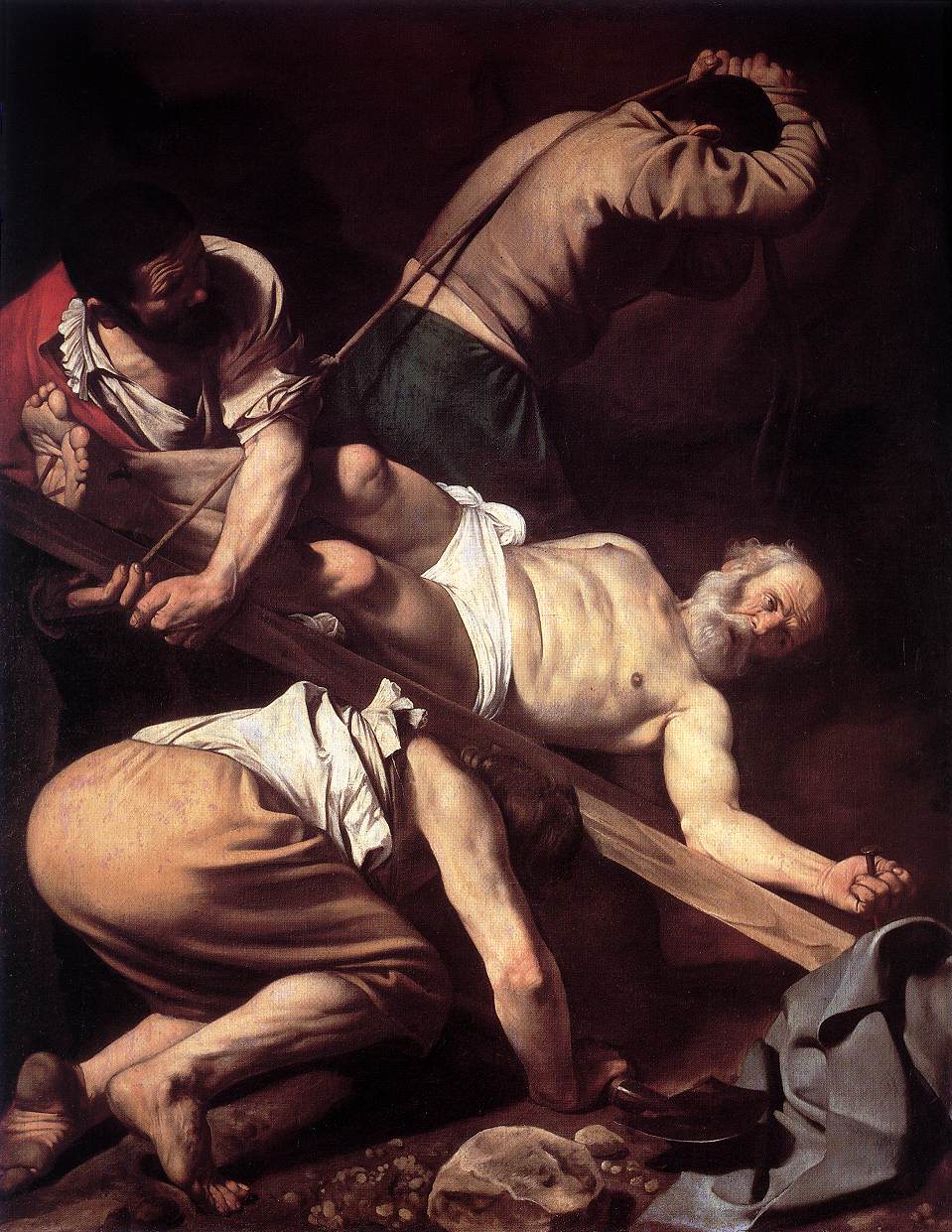
Slide 6: Annibale Carracci The Assumption of the Virgin, 1601, Rome, Cerasi Chapel
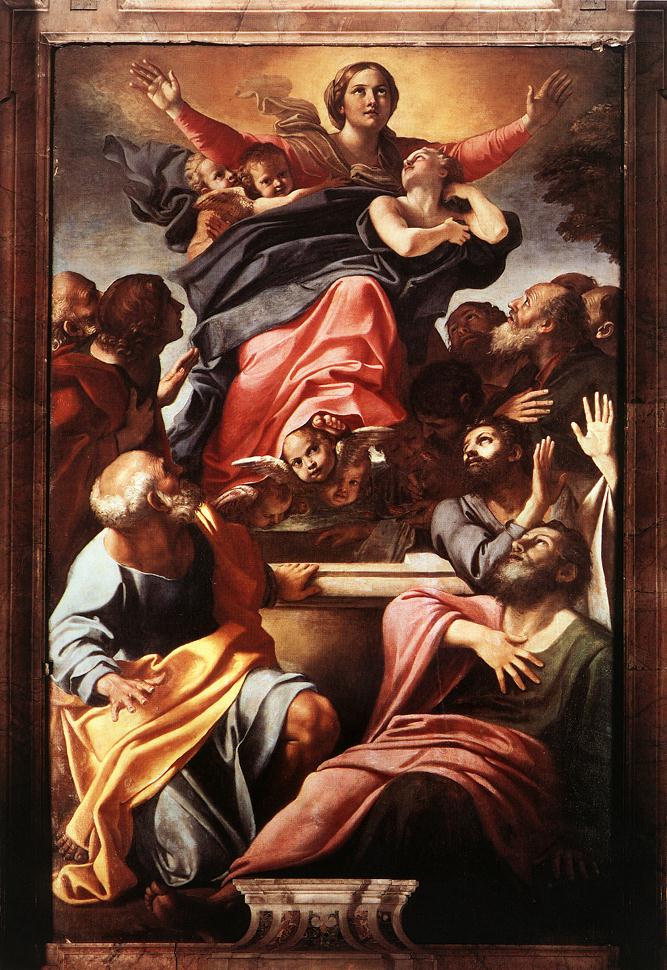
Slide 7: Annibale Carracci The Dead Christ Mourned, c 1603, London, NG
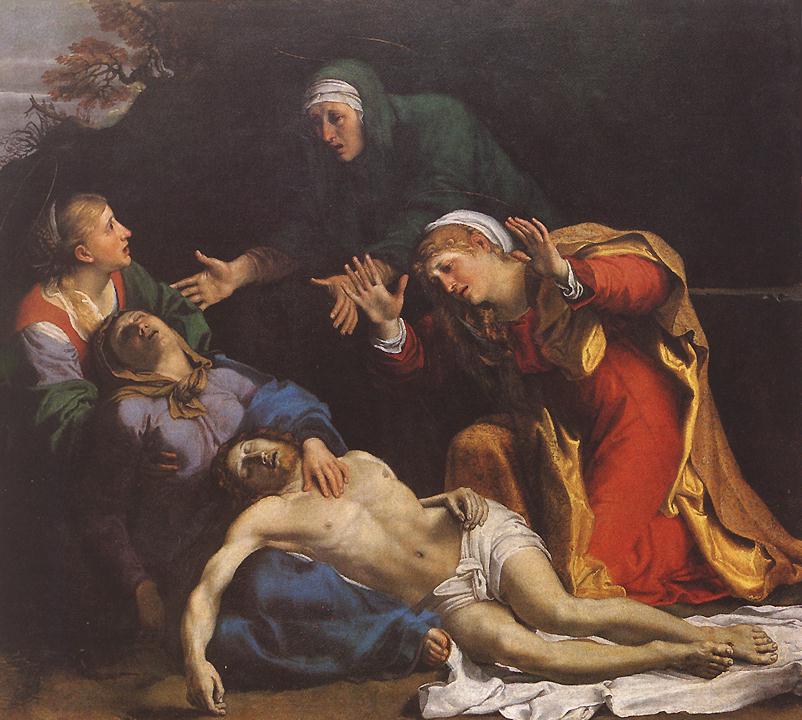
Slide 8: Annibale Carracci Ceiling of the Farnese gallery including Diana and Endymion, love and Juno studies for Ignudi, 1597-1608, Rome, Farnese Palace
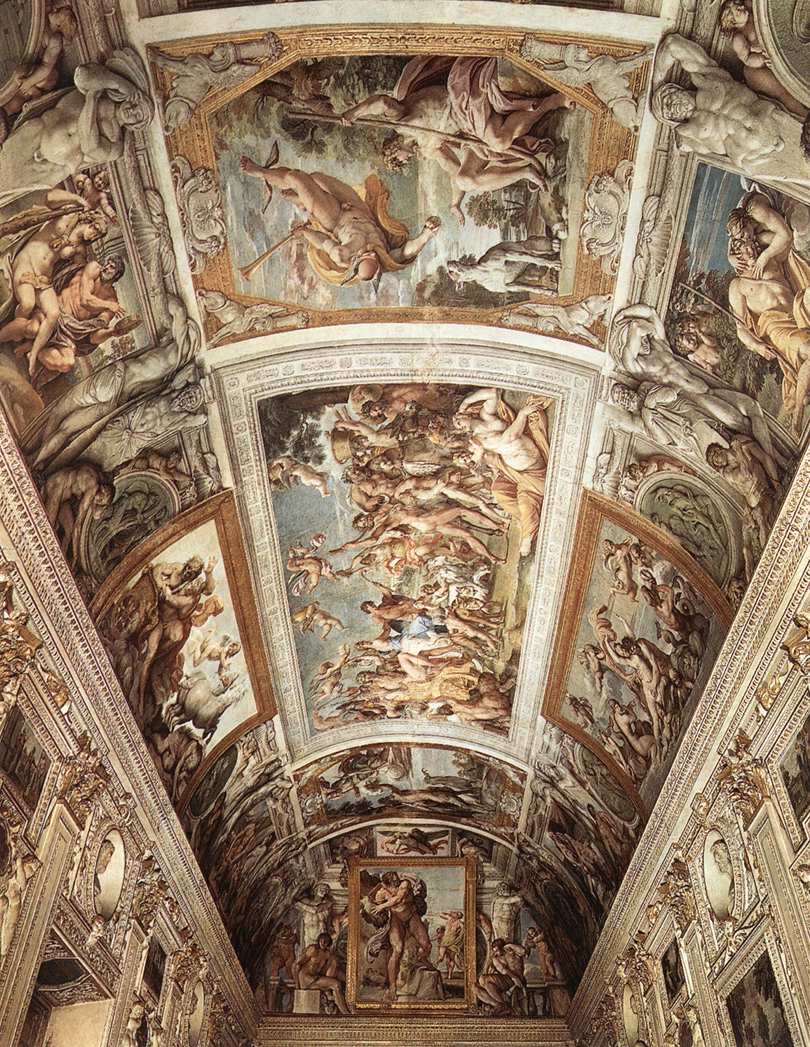
Slide 9: Pietro da Cortona The Glorification of Urbain VIII’s Reign 163 3-1639, Rome, Barberini Palace
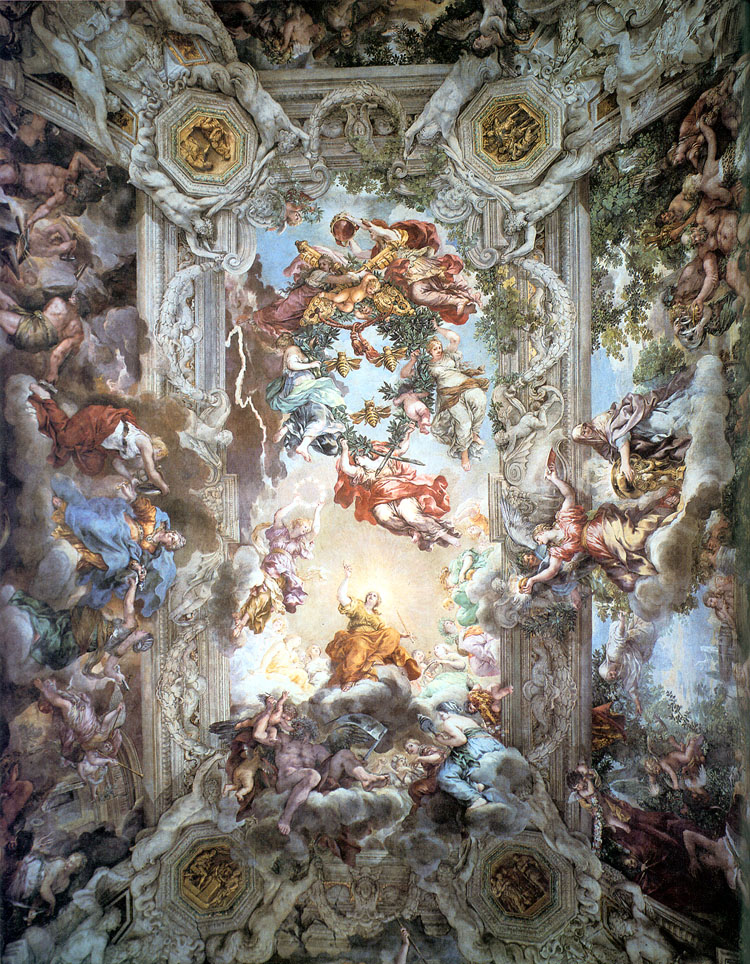
Slide 10: Antoine Coysevox Louis XIV (stucco), c. 1680, Versailles, Salon de la Guerre
Antoine Coysevox (1640-1720) was one of Louis XIV’s most talented sculptors. His
commissions at Versailles include this large stucco relief called the
Triumph of Louis XIV.
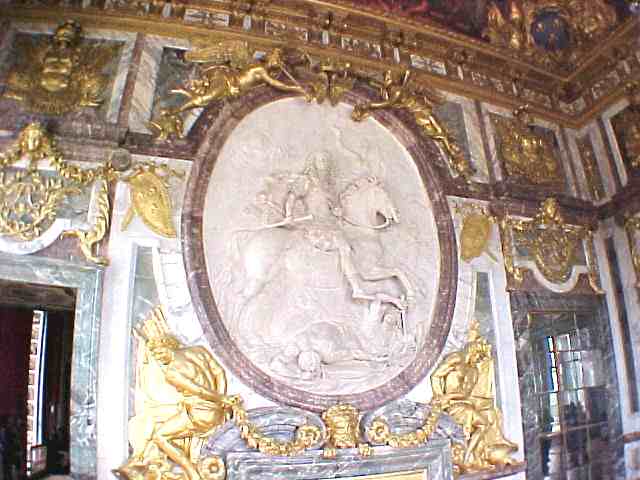
Slide 11: Charles Le Brun Salon de Ia Guerre (ceiling painting), 1678-1686, Versailles
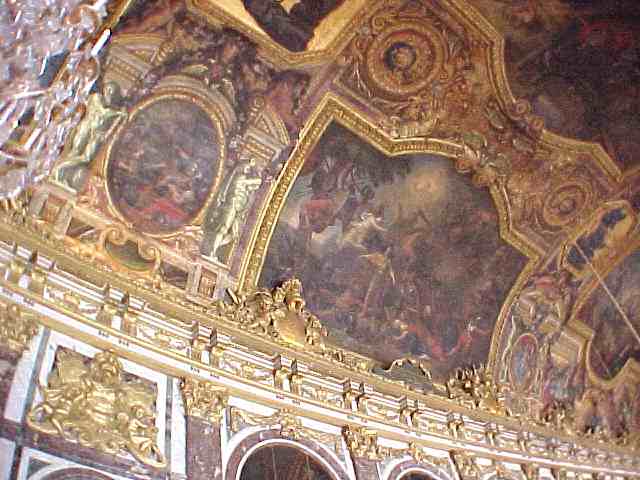
Slide 12: Peter Paul Rubens Landing of Marie de’ Medici at Marseilles 1622-25, Paris, Louvre
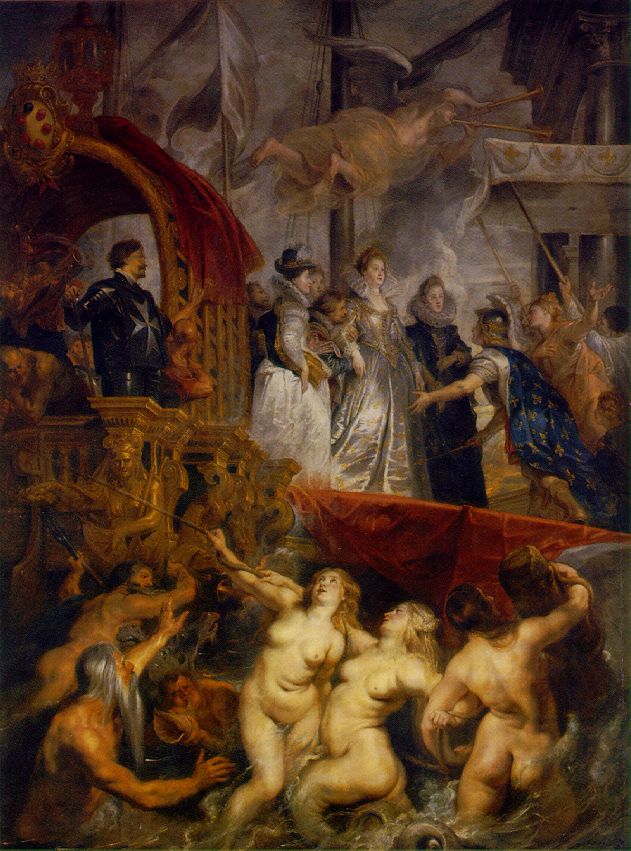
Slide 13: Rubens Apotheosis of Henri l 1622-25, Paris, Louvre
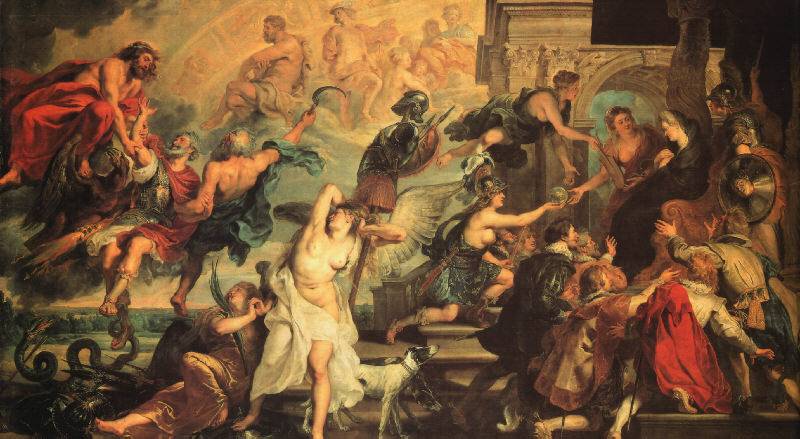
Slide 14: Nicolas Poussin The Israelites gathering the manna 1639, Paris, Louvre
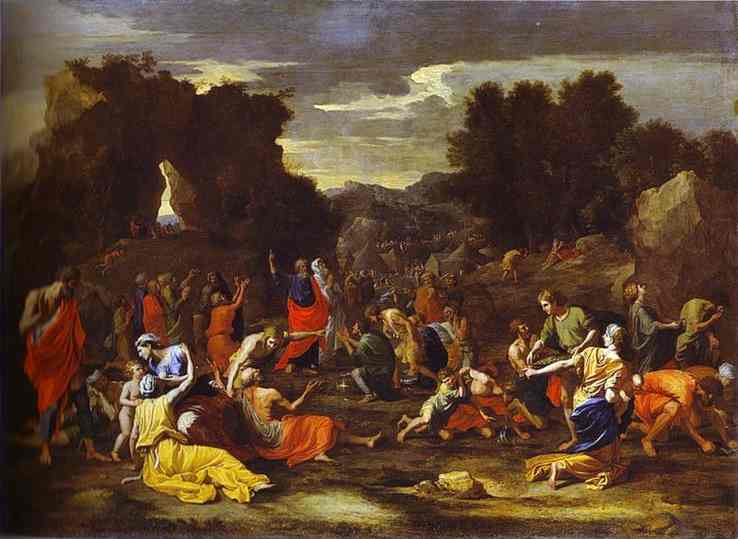
Slide 15: Poussin The Death of Germanicus 1627, Minneapolis, Institute of Arts
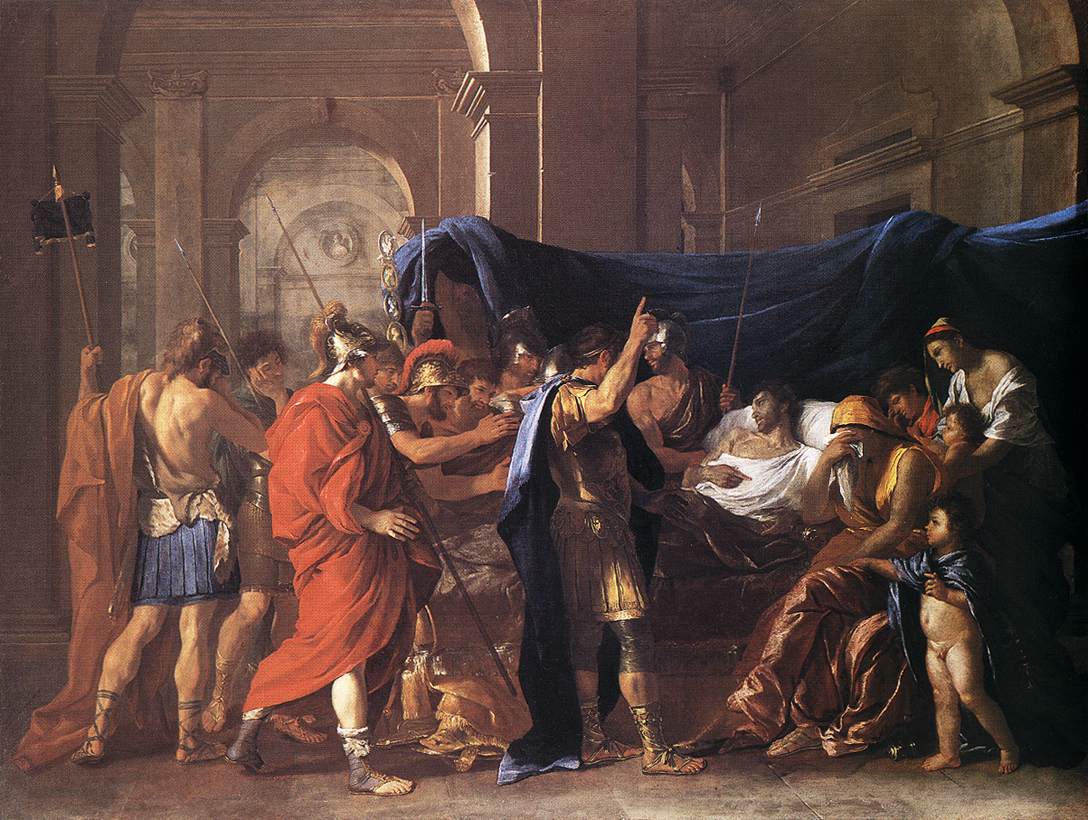
The first important commission Poussin received was from Cardinal Francesco Barberini at the end of 1626, for the Death of Germanicus. The picture, now in the Minneapolis Institute of Arts, was completed early in 1628 and immediately became famous. The subject was inspired by the ‘Annals’ of Tacit. This was the first of the deathbed scenes that Poussin was to favour throughout his life. The figures are arranged in a frieze-like composition which was almost certainly derived from the arrangement of figures on classical sarcophagi. Already, too, there is a preoccupation with classical antiquity and its intensely moral approach to life. In his pictures Poussin was to become obsessed by morality, and with man facing the supreme trial: how to face death with equanimity
Slide 16: Rubens The Miracles of St Ignatius Loyola 1617, Vienna, Kunsthistorisches Museum
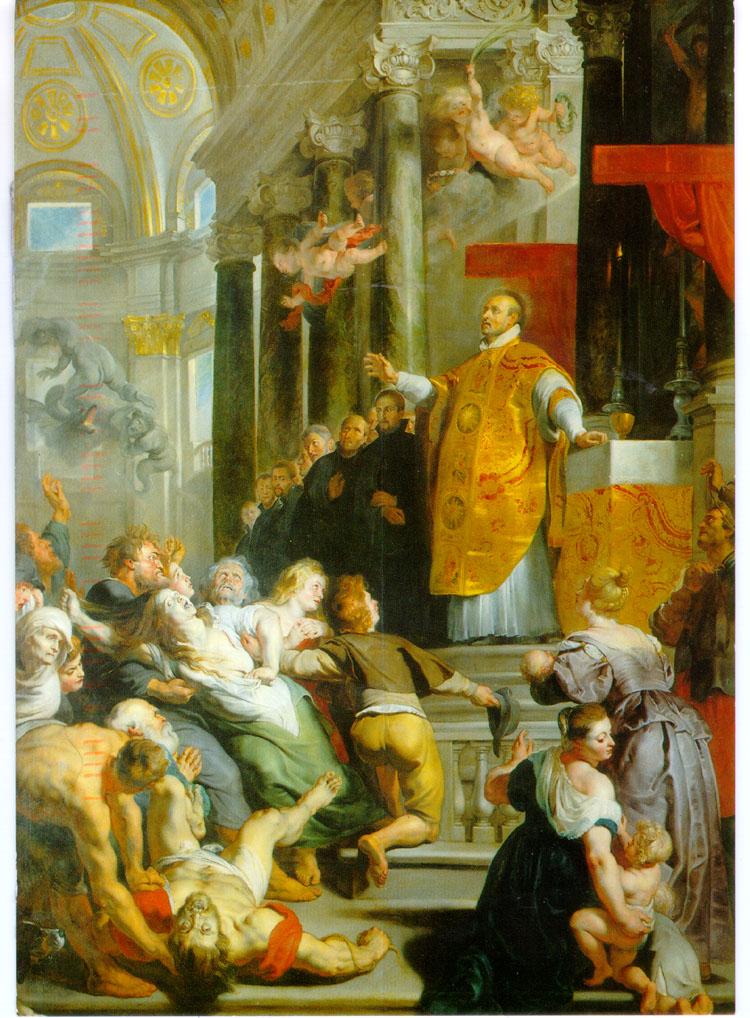
Slide 17: Philippe de Champaigne Portrait of Cardinal Richelieu c. 1637, London NG
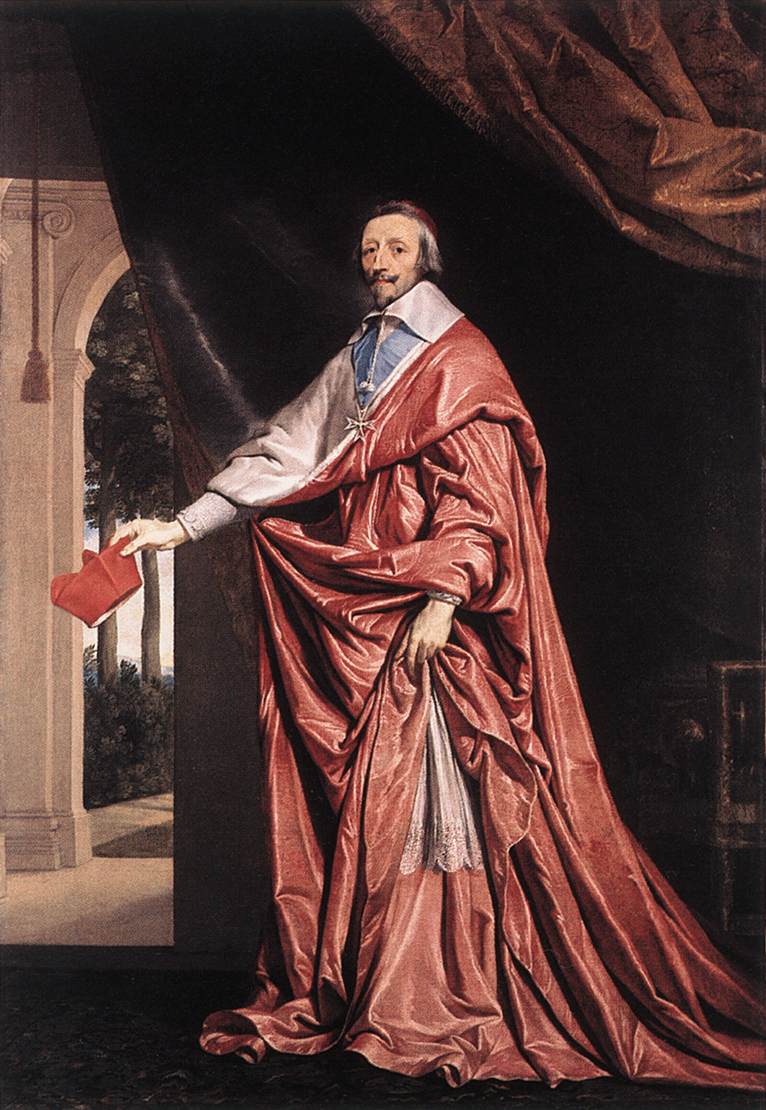
Slide 18: Rubens Portrait of Helena Fourment “Het Pelsken” c. 1638, Vienna, Kunsthistorisches Museum(image not found)
Slide 19: Claude Perseus and the Origins of Coral 1674, Holkham Hall
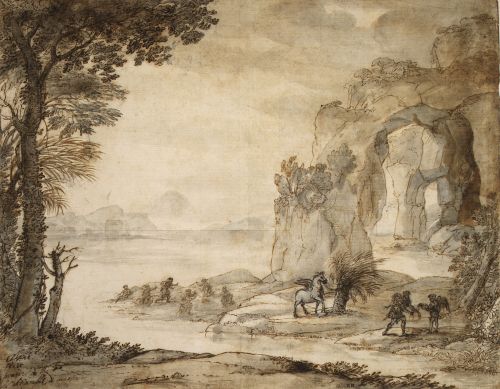
Slide 20: Annibale Carracci The Butcher’s Shop c. 1583, Christ Church, Oxford
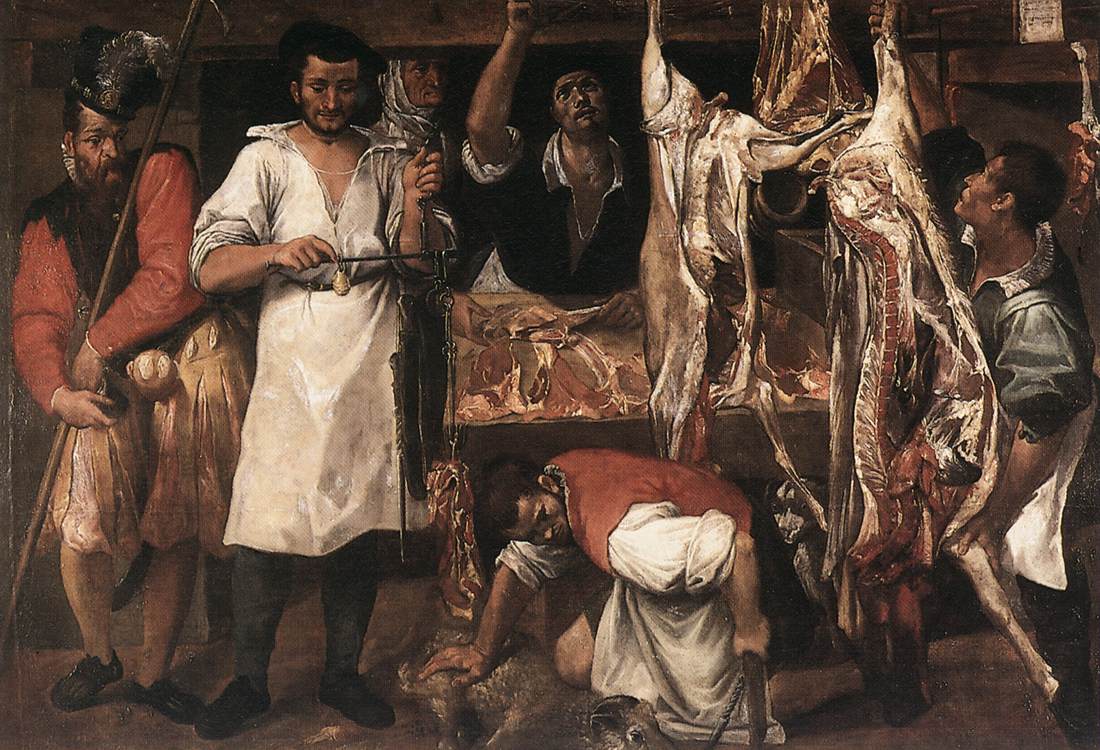
Slide 21: Le Valentin The Four Ages of Man c. 1626, London, NG
